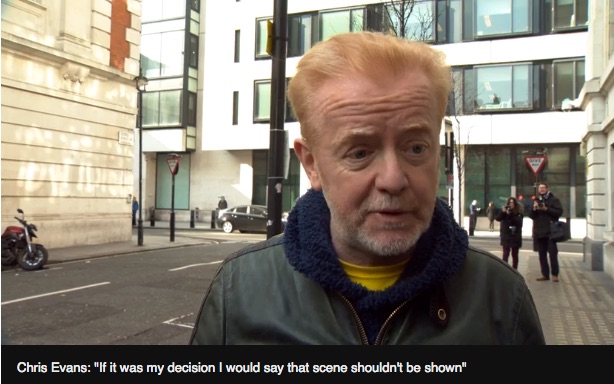Top Gear's Cenotaph nightmare: Why they were right to apologise

The Duke of Wellington was once approached by a man with the words, "Mr Jones, I believe?" The Duke is said to have replied: "If you believe that you'll believe anything."
It may be unfair to Chris Evans and the Top Gear team, but that was the quote that sprang to mind when they were so contrite about their antics around the Cenotaph in Whitehall over the weekend.
They had permission to film there and the road was closed. However, footage on social media showed Matt LeBlanc and Ken Block doing wheel spins and "doughnuts", in which the car is hurled round its own axis amid plumes of smoke from burning rubber and the banshee-like howl of engines.
After criticism from a former military commander and former Bond actor Sir Roger Moore, Evans, who took over as presenter from Jeremy Clarkson after the latter's assault on a producer, claimed to be "mortified" by it and said the scene shouldn't be shown.
Well, his remorse does sound quite genuine. On the other hand – and this is what brought Wellington to mind – Top Gear is a show that has thrived on outrage. The antics of Clarkson, May and Hammond scandalised millions most enjoyably. The big question ever since their departure was whether their successors would have the same headline-making capabilities. Yes, on the evidence of the Centotaph affair: the legacy is in safe hands. If Evans has made a false step, it's in apologising; Clarkson would have toughed it out.
But he was right to apologise, whether or not we suspect his tears were of the crocodilian variety. Because there are some things that deserve respect because they symbolise something greater than themselves, and the Cenotaph is one of them.
It is, in itself, a sombre structure of Portland stone designed by Edwin Lutyens to commemorate the dead of the First World War. It is the site of the annual service of Remembrance on the Sunday nearest to November 1. And people really don't like it when it's treated like that.
In 2010 the son of Pink Floyd star Dave Gilmour, Charlie Gilmour was filmed swinging from one of the flags during a student protest. For that and other antics he got 16 months.
Generally speaking, the Cenotaph is left alone.
And that's interesting. Even in these post-religious days, there are things that are held to be sacred. As Brits we're uncomfortable with the word, but still: the Cenotaph is different. Because it symbolises not the sort of national pride evoked by Nelson's Column a little further down the road, or all those statues in Parliament Square, but national mourning.
Since it was first built, it has been the focus of grief at the deaths of well over a million soldiers, sailors and airmen. While the details of the conflicts in which they fought inevitably grow hazier, there is still a sense that they mattered enormously, and that each death should be remembered and valued. That strangely-shaped piece of architectural sculpture has come to stand for all of that, and that is why Top Gear's headline-grabbing activity is so inappropriate. The Cenotaph is not just a 'location' – the background for something else – it is overwhelmingly present.
Christians might find this particularly thought-provoking. Post-religious we might be, but we are not post-spiritual. People still respond to mystery. They are still inclined to bow their heads in the presence of extreme suffering and grief. They still respond to symbols that speak of things too sad and sombre for words, and they object to them being trivialised or exploited for profit or entertainment.











